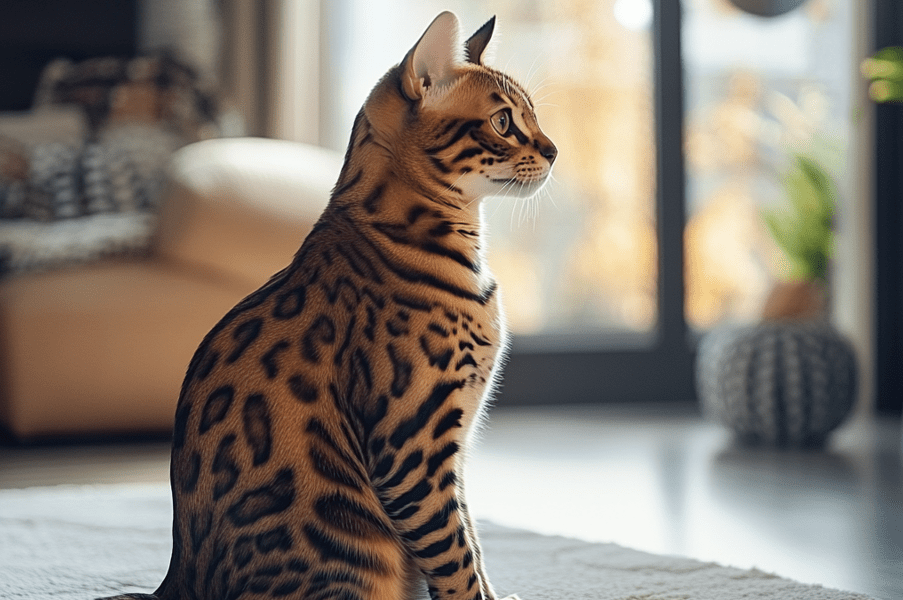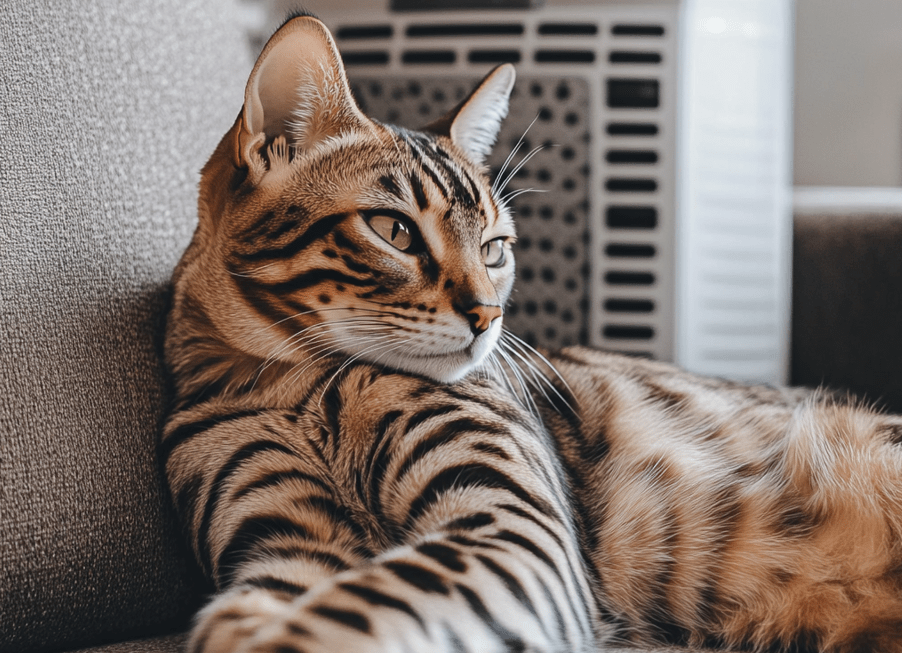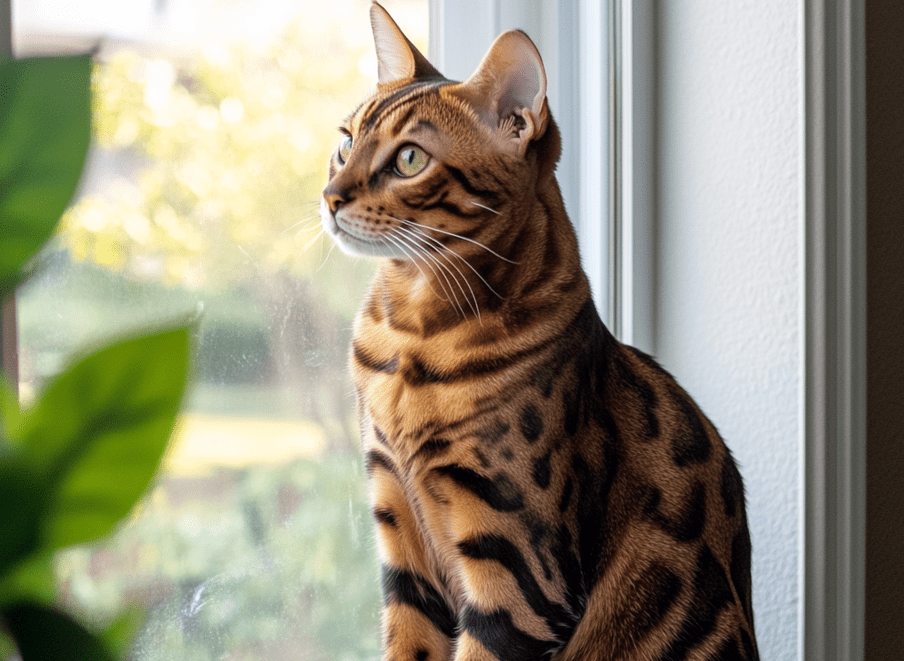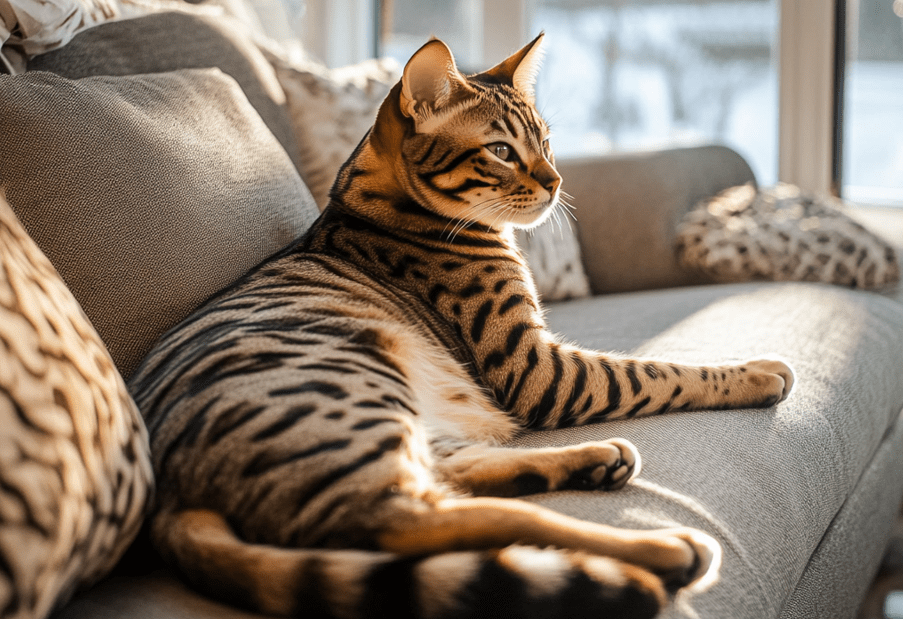
Bengal cats are known for their playful, energetic, and sometimes intense personalities, but their tendency to bite during play can be a challenge for owners. Learning how to stop Bengal cat biting is essential to ensure safe, enjoyable interactions and maintain a strong bond with your feline friend. Rooted in their wild instincts, this behavior is often a natural expression of their predatory nature rather than aggression. This comprehensive guide explores why Bengals bite during play, offers practical strategies to redirect this behavior, and provides tips to foster positive playtime, creating a harmonious relationship with your Bengal.
Why Do Bengal Cats Bite During Play?
Bengals are a hybrid breed, descended from the Asian leopard cat, which gives them strong hunting instincts and a high-energy personality. Biting during play is often a manifestation of these instincts rather than a sign of malice. Understanding the reasons behind this behavior is the first step to addressing it effectively.
Common Causes of Biting
Predatory Instincts: Bengals mimic hunting behaviors, such as stalking and pouncing, which can include playful biting.
Overstimulation: Intense play can overexcite Bengals, leading to bites as a release of energy.
Teething (in Kittens): Young Bengals may bite to relieve teething discomfort.
Attention-Seeking: Biting can be a way to engage you in play or get your attention.
Lack of Training: If not taught boundaries early, Bengals may see biting as acceptable play behavior.
Boredom or Frustration: Insufficient mental or physical stimulation can lead to rough play, including biting.
Is Biting Normal for Bengals?
Yes, playful biting is normal for Bengals, especially during their high-energy play sessions. Their wild ancestry makes them more prone to rough play than many other breeds. However, biting that causes injury, occurs outside of play, or is accompanied by hissing or growling may indicate aggression, stress, or health issues, requiring further investigation.
The Importance of Addressing Biting Behavior
While playful biting may seem harmless, addressing it promptly is crucial for several reasons:
Safety: Biting can cause scratches or injuries, especially for children or other pets.
Bonding: Redirecting biting strengthens trust and improves your relationship with your Bengal.
Preventing Escalation: Unchecked biting can become a habit, leading to more intense or aggressive behavior.
Comfort: A bite-free play environment is more enjoyable for everyone in the household.
By using positive, stress-free methods, you can stop Bengal cat biting and create a safer, more rewarding play experience.
Strategies to Stop Bengal Cat Biting
To effectively stop your Bengal from biting during play, focus on redirection, positive reinforcement, and meeting their physical and mental needs. Below are practical, humane strategies to address this behavior.
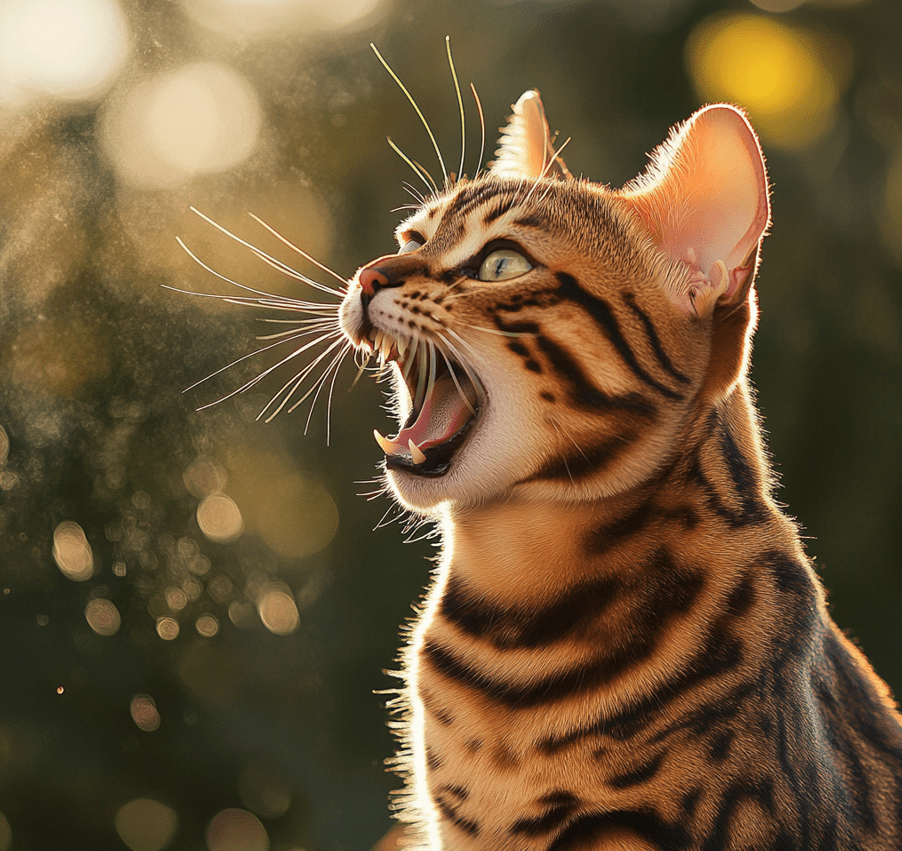
1. Redirect Biting to Appropriate Toys
Bengals bite to express their hunting instincts, so provide acceptable outlets for this behavior.
Use Interactive Toys: Engage your Bengal with feather wands, laser pointers, or plush toys that mimic prey. These allow them to “hunt” and bite safely.
Avoid Hands or Feet: Never use your hands or feet as play targets, as this encourages biting people. If your Bengal tries to bite you, redirect them to a toy.
Offer Chew Toys: Provide durable cat chew toys, especially for teething kittens, to satisfy their need to bite.
Rotate Toys: Keep play fresh by rotating toys weekly to maintain interest and prevent boredom.
Pro Tip: Choose toys that are long enough to keep your hands at a safe distance, such as wand toys with extended strings.
2. Recognize and Manage Overstimulation
Bengals can become overexcited during play, leading to biting. Learning to read their body language helps you prevent this.
Signs of Overstimulation: Dilated pupils, flattened ears, twitching tail, or sudden stillness indicate your Bengal is overstimulated.
Pause Play: If you notice these signs, stop play immediately and give your Bengal a few minutes to calm down.
Short Play Sessions: Keep play sessions to 10–15 minutes, followed by a break, to avoid overwhelming your cat.
Calming Environment: After play, offer a quiet space with a cozy bed or perch for your Bengal to relax.
3. Use Positive Reinforcement
Rewarding desired behaviors encourages your Bengal to play gently and avoid biting.
Reward Gentle Play: Offer treats, praise, or a favorite toy when your Bengal plays without biting. For example, treat them when they chase a wand toy instead of your hand.
Clicker Training: Pair a clicker with treats to mark gentle play behaviors, such as pawing a toy softly. Bengals’ intelligence makes them responsive to this method.
Ignore Unwanted Behavior: If your Bengal bites, calmly walk away or stop play to signal that biting ends fun.
Consistency: Ensure all household members reinforce the same rules to avoid confusion.
4. Provide Ample Physical Exercise
Bengals have high energy levels, and insufficient exercise can lead to rough play, including biting. Regular activity helps burn off energy and reduces the urge to bite.
Daily Play Sessions: Dedicate 20–30 minutes twice daily to active play with toys that mimic prey.
Cat Wheels: A cat exercise wheel allows your Bengal to run at their own pace, ideal for high-energy cats.
Climbing Structures: Install cat trees, shelves, or wall perches to encourage jumping and climbing.
Leash Training: If safe, take your Bengal for supervised outdoor walks to explore and expend energy.
5. Offer Mental Stimulation
Bengals are highly intelligent and need mental challenges to stay content. Mental stimulation can reduce boredom-driven biting.
Puzzle Toys: Use treat-dispensing balls, puzzle boards, or foraging toys to engage their problem-solving skills.
Scent Games: Hide treats or catnip toys around the house for your Bengal to “hunt,” satisfying their predatory instincts.
Training Sessions: Teach tricks like “sit,” “fetch,” or navigating an obstacle course to keep their mind active.
DIY Puzzles: Create a puzzle by hiding kibble in a muffin tin covered with tennis balls for a budget-friendly challenge.
6. Create a Stimulating Environment
A Bengal-friendly environment prevents boredom and reduces biting by providing outlets for their energy and instincts.
Vertical Spaces: Offer cat trees, window perches, or shelves for climbing and observing.
Hiding Spots: Provide tunnels, boxes, or cat condos for exploration and rest.
Window Views: Place a perch near a window for bird-watching or outdoor entertainment.
Rotate Toys: Swap out toys weekly to maintain novelty and prevent disinterest.
7. Establish Play Boundaries Early
Teaching your Bengal appropriate play behavior from a young age prevents biting from becoming a habit.
Start Young: For kittens, redirect biting to toys immediately and reward gentle play.
Set Rules: Consistently discourage biting people or furniture by redirecting to acceptable targets.
Socialization: Expose your Bengal to various people, pets, and environments to reduce fear-based biting.
Be Patient: Behavior change takes time, especially with strong-willed Bengals.
Addressing Persistent Biting
If your Bengal’s biting continues despite your efforts, consider these additional steps to address underlying causes.
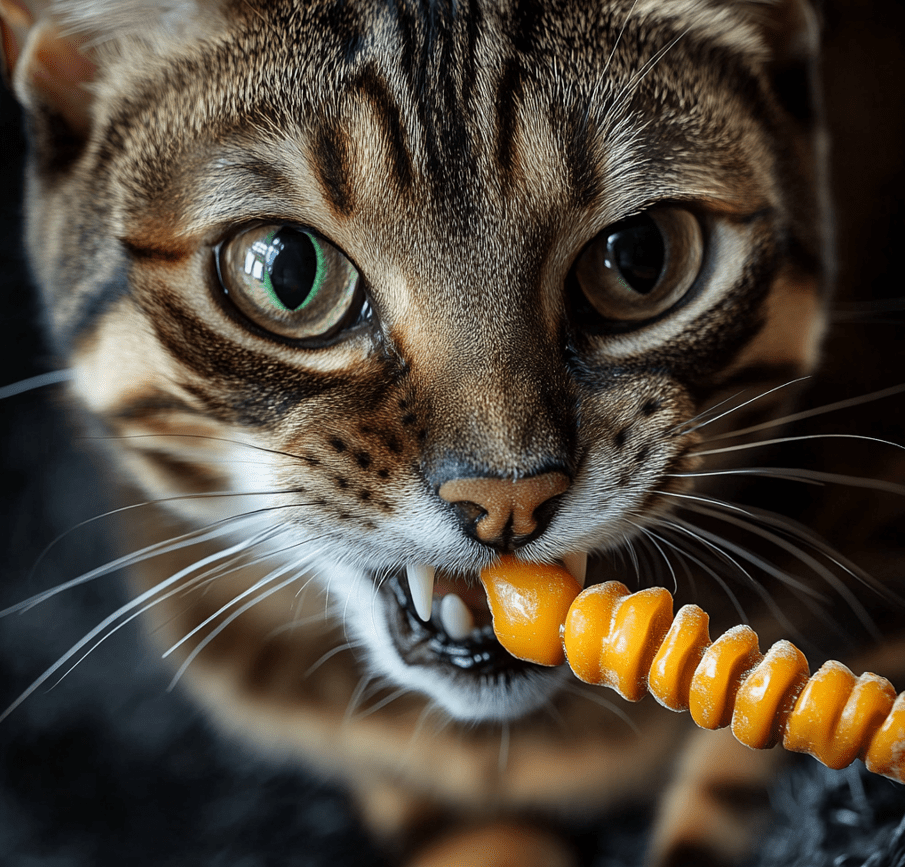
1. Rule Out Medical Issues
Pain, discomfort, or health issues can cause biting, especially if it’s sudden or accompanied by other changes (e.g., lethargy, appetite loss). Common issues include:
-
Dental problems
-
Arthritis or joint pain
-
Skin irritations or allergies
Consult a veterinarian to rule out medical causes and discuss treatment options.
2. Check for Stress or Anxiety
Stress can trigger biting, especially in sensitive Bengals. Identify and address stressors such as:
-
Changes in routine or environment
-
Conflicts with other pets
-
Loud noises or lack of safe spaces
Use pheromone diffusers, calming supplements, or a quiet retreat space to reduce anxiety.
3. Consult a Feline Behaviorist
A certified cat behaviorist can assess your Bengal’s environment, play style, and interactions to create a tailored plan for stopping biting. They may recommend specific toys, training techniques, or environmental changes.
4. Spay or Neuter
Unspayed or unneutered Bengals may exhibit more intense play behaviors, including biting, due to hormonal drives. Spaying or neutering can reduce this behavior and promote calmer play.
Common Mistakes to Avoid
When trying to stop Bengal cat biting, steer clear of these pitfalls to ensure success and avoid stress:
Punishment: Yelling, spraying water, or physical discipline scares your Bengal, damages trust, and may worsen biting.
Using Hands as Toys: Encouraging hand-biting teaches your Bengal that people are prey, making it harder to stop.
Inconsistent Rules: Mixed signals (e.g., allowing biting sometimes) confuse your cat and undermine training.
Ignoring Boredom: Without enough stimulation, Bengals may bite to entertain themselves.
Overreacting to Bites: Dramatic reactions can excite your Bengal, reinforcing the behavior as a game.
Fun Alternatives to Biting
Turn your Bengal’s biting instincts into positive, engaging activities with these fun alternatives:
Kick Toys: Provide long, plush toys your Bengal can grab, kick, and bite safely, mimicking prey.
Obstacle Course: Build a home course with tunnels, boxes, and perches for your Bengal to navigate, channeling their energy.
Water Play: Many Bengals love water. Float toys in a shallow container or use a pet fountain for playful splashing.
DIY Toys: Create a feather wand or treat-stuffed cardboard tube for budget-friendly fun that satisfies their hunting drive.
Conclusion

Learning how to stop Bengal cat biting during play is a rewarding journey that enhances your relationship with your energetic, intelligent companion. By understanding the instincts behind their biting, using redirection, positive reinforcement, and ample stimulation, you can transform rough play into safe, enjoyable interactions. The strategies in this guide—from interactive toys to environmental enrichment—equip you to address biting effectively while keeping your Bengal happy and engaged. Start implementing these tips today, and enjoy a bite-free, fun-filled playtime with your Bengal for years to come.

